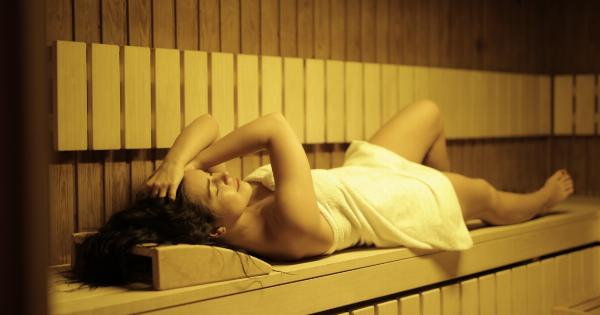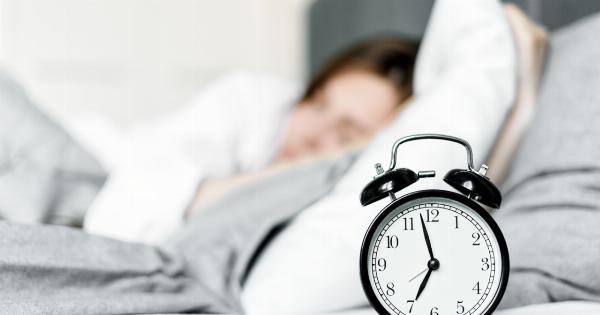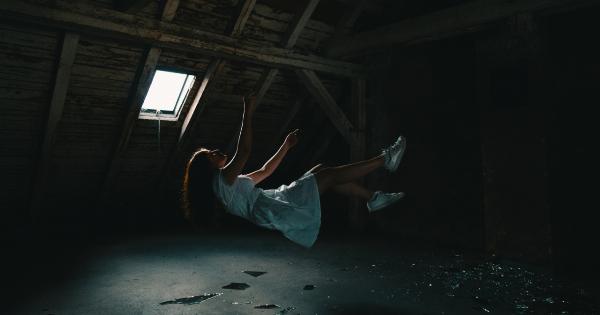Sleep paralysis is a phenomenon that occurs during the transitional period between wakefulness and sleep. It is characterized by a temporary inability to move or speak, often combined with a feeling of pressure on the chest or a sense of impending doom.
While most people experience sleep paralysis at least once in their lifetime, it can become a frequent and distressing occurrence for some individuals.
The Science Behind Sleep Paralysis
Sleep paralysis is closely associated with rapid eye movement (REM) sleep, which is the stage of sleep when vivid dreaming occurs.
During REM sleep, the brain sends signals to inhibit movement in order to prevent bodily actions that may occur in dreams from being acted out in reality. This temporary muscle atonia ensures that we sleep peacefully without any disruptive behavior.
However, in the case of sleep paralysis, the brain fails to transition smoothly between REM sleep and wakefulness. The individual may suddenly regain consciousness while their muscles remain paralyzed, leading to a state of helplessness and anxiety.
The Experience of Sleep Paralysis
Individuals who experience sleep paralysis often describe a number of shared experiences. One common occurrence is the sensation of a heavy weight on the chest, making breathing difficult.
This feeling of being pinned down can be accompanied by hallucinations, which can be visual, auditory, or tactile in nature.
Visual hallucinations during sleep paralysis commonly involve the perception of shadowy figures or malevolent presence in the room. Auditory hallucinations may manifest as whispers, murmurs, or even loud screams.
Tactile hallucinations can involve the feeling of being touched, grabbed, or even strangled by an invisible force.
Moreover, those who suffer from sleep paralysis often report intense fear and a profound sense of dread. This fear is understandable given the unique and unsettling nature of the experience.
While sleep paralysis itself is harmless, the psychological and emotional impact it can have on individuals should not be overlooked.
The Causes of Sleep Paralysis
There are several factors that may contribute to the occurrence of sleep paralysis.
One common cause is sleep deprivation, as irregular sleep patterns disrupt the normal sleep-wake cycle and increase the likelihood of experiencing sleep paralysis episodes. Sleep disorders such as insomnia, narcolepsy, and sleep apnea are also known to be associated with sleep paralysis.
Another significant factor is stress and anxiety. High levels of stress can disrupt sleep and make individuals more susceptible to sleep paralysis.
Similarly, irregular sleep schedules, jet lag, and a lack of sleep hygiene can increase the likelihood of experiencing sleep paralysis.
Additionally, some research suggests that certain medications, such as those used to treat attention deficit hyperactivity disorder (ADHD) or depression, may contribute to the occurrence of sleep paralysis in some individuals.
Treating and Managing Sleep Paralysis
While there is no specific cure for sleep paralysis, there are steps individuals can take to lessen its frequency and impact on their lives.
Establishing a regular sleep routine, ensuring a comfortable sleep environment, and practicing good sleep hygiene can significantly reduce the likelihood of experiencing sleep paralysis. This includes avoiding caffeine and electronic devices before bed, and creating a calm and relaxing atmosphere in the bedroom.
If sleep paralysis episodes persist and significantly affect an individual’s quality of life, seeking professional help is recommended.
Sleep specialists can conduct a thorough evaluation to identify any underlying sleep disorders or other contributing factors. Treatment options may include cognitive-behavioral therapy, medication management, or a combination of both.
The Importance of Social Support
Living with sleep paralysis can be a distressing experience, but having a strong support system can make a significant difference.
Sharing experiences and feelings with understanding family members, friends, or support groups can provide comfort and reassurance. It is important for individuals affected by sleep paralysis to know that they are not alone and that others have experienced similar phenomena.
Myths and Misconceptions
Sleep paralysis has been associated with various myths and superstitions throughout history.
In many cultures, it was believed to be the work of evil spirits or demons, leading to the creation of supernatural explanations and rituals to ward off these malevolent entities.
However, it is crucial to differentiate between the scientific understanding of sleep paralysis and the cultural interpretations surrounding it. Sleep paralysis is a natural physiological phenomenon with a scientific explanation.
Debunking myths and misconceptions surrounding sleep paralysis is essential in order to provide accurate information and alleviate unnecessary fear.
The Impact on Daily Life
Although sleep paralysis itself does not pose any physical harm, it can have a significant negative impact on an individual’s well-being and daily functioning.
The fear and anxiety associated with repeat episodes can lead to chronic sleep deprivation, which in turn affects cognitive function, mood stability, and overall quality of life.
Daytime sleepiness, difficulty concentrating, and decreased productivity are common consequences of sleep paralysis.
To maintain physical and mental health, it is important to address the underlying causes of sleep paralysis and develop strategies to manage and minimize its occurrence.
Conclusion
Sleep paralysis is a distressing phenomenon that affects people from all walks of life. Understanding the scientific explanation behind sleep paralysis is crucial to alleviate fear and dispel myths surrounding this experience.
While sleep paralysis itself is not physically harmful, it can have significant psychological and emotional implications.
By establishing consistent sleep habits, managing stress levels, and seeking professional help if needed, individuals can minimize the occurrence and impact of sleep paralysis.
Remember, the support and understanding of friends, family, or support groups can play a pivotal role in coping with this challenging condition.





























